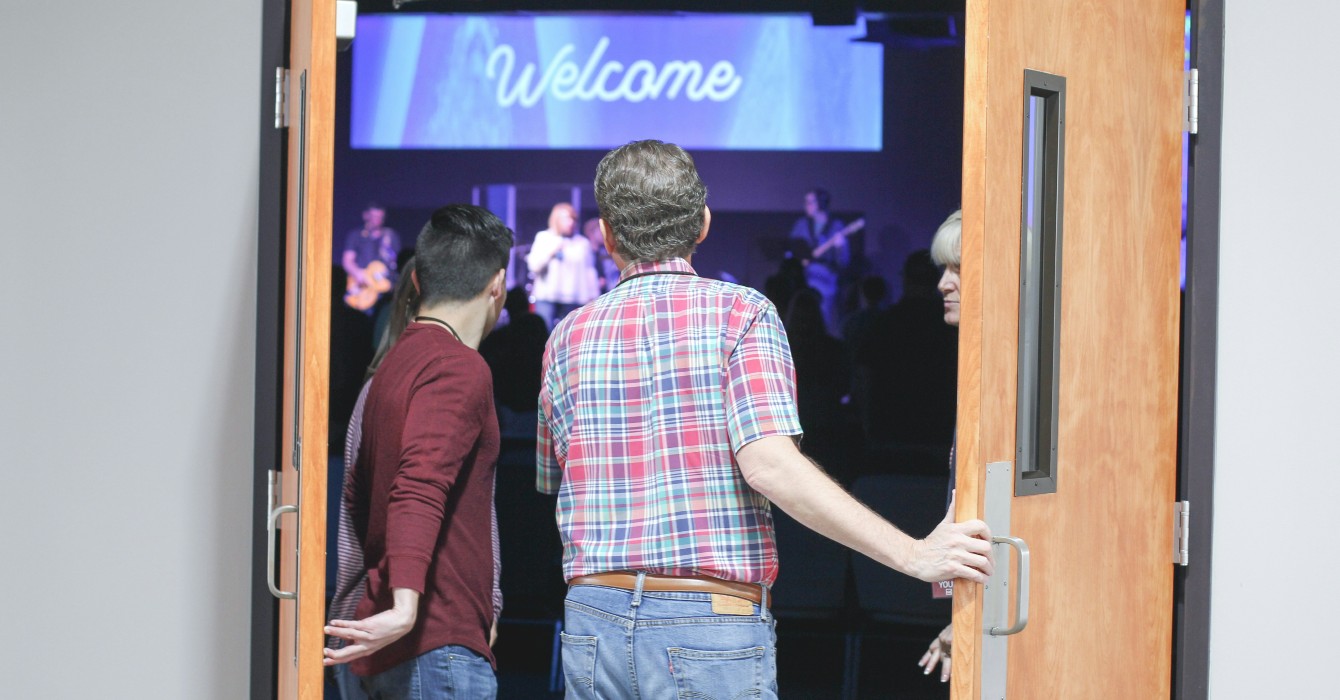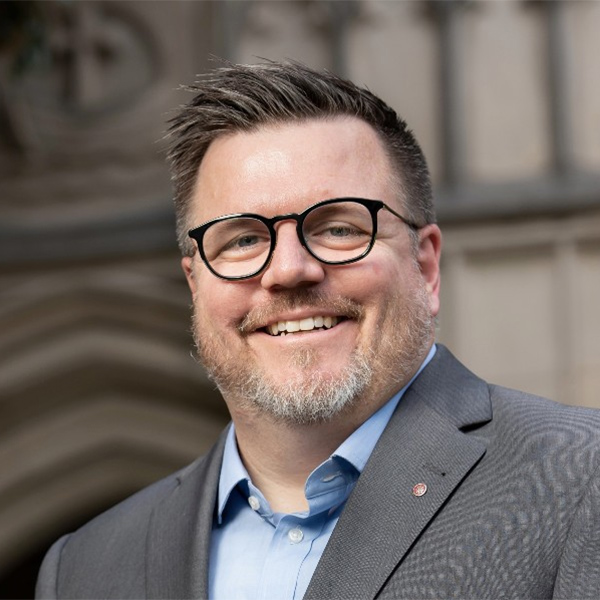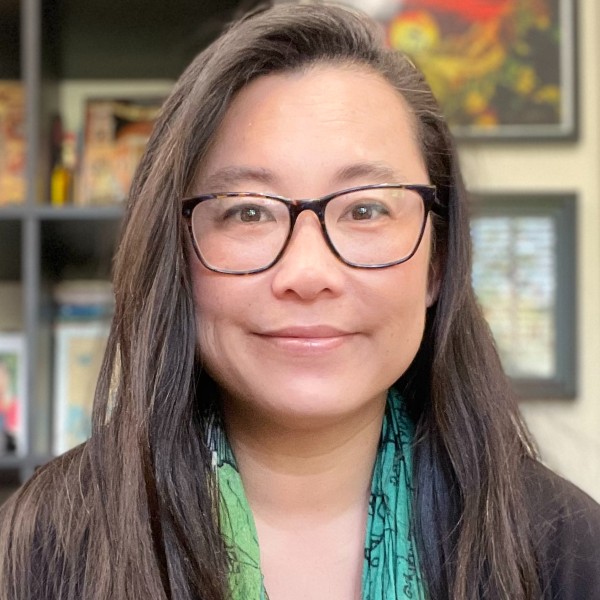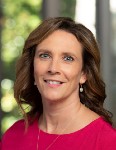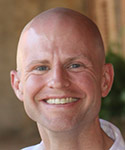Change isn’t easy. But it can be made easier, says Kara Powell of Fuller Theological Seminary.
Powell and co-authors Jake Mulder and Raymond Chang blend theology, original research with diverse churches, and business literature to offer guidance for congregational leaders in their new book, “Future-Focused Church: Leading Through Change, Engaging the Next Generation, & Building a More Diverse Tomorrow.”
“We are optimists about the future of the church. We’re very aware of some of the really discouraging data about the fatigue of pastors, churches shrinking, young people disengaging,” said Powell, who is executive director of the Fuller Youth Institute, founder of the TENx10 Collaboration and chief of leadership formation at Fuller.
“But fundamentally, we’re optimists because of what we believe about God,” she said. “God is always working and redeeming.”
The book describes four phases — called “zones” — in the change process and includes stories, research findings and reflection questions. The book ends with a chapter called “A Suggested 18-Month Change Journey,” in which they describe a step-by-step process to implement the learnings of the book.
“It includes our research with 1,000 churches, our literature review of really great organizational and leadership and change research, and also Scripture,” Powell said.
Powell spoke with Faith & Leadership’s Sally Hicks about the book and why she is excited about the future of the church. The following is an edited transcript.
Faith & Leadership: How do you hope people use “Future-Focused Church”?

Kara Powell: We do talk about what needs to change, but really, the bulk of the book is on how to bring about change. It emerged both from struggles that we saw churches navigate as well as what we saw churches take as the best path to experience God’s best future for them.
And we follow a practical theology method in many ways. It’s thoroughly understanding where we are, as well as where God would love to take us, and what is the thoughtful, interdisciplinary, communal process to get from here to there.
We thought, You know what? Churches need help, not just with what needs to change, although we do talk about that in terms of prioritizing youth discipleship, loving our diverse neighbors, loving our diverse community, and then just loving our neighbors in general.
We’ve seen God work in churches, especially through young people. So it’s the bright spots we’ve actually seen in these last 10 years that really inspire us, and we get to tell a lot of those stories in the book.
F&L: Explain a little bit about the definition of the “future-focused church” and the idea of the three checkpoints.
KP: Our core definition of a future-focused church is a group of Jesus followers who seek God’s direction together. It’s about seeking God and knowing where God is calling us. This isn’t something we create on our own. We seek God.
It’s also something that no individual leader does. It’s “followers” — plural — not a single leader who feels they need to come up with the perfect vision for the future.
The second half of the definition is the three checkpoints that we think are essential for churches in the future: relationally discipling young people, modeling kingdom diversity and tangibly loving our neighbors.
When we look at Scripture, when we look at churches and when we look at the world today, those seemed like three priorities that are important across the board.
Now, our future-focused process can be used with any change. If a church wants to become more prayerful, great, you can use the process. If a church wants to be more involved in local or global outreach, wonderful, you can use the process. But much of what we describe relates to how our process helps bring about those three changes.
F&L: How are they related to each other?
KP: This generation is the most diverse generation we’ve ever had in the U.S. In 2020, we crossed a line that now half of those under 18 are young people of color. So when we’re talking about young people, we’re talking about diversity. And what young people desperately want to give and receive is the chance to love their neighbors.
F&L: You merge research, business literature, Scripture and theology in a blend that seems like it would help folks on multiple levels. What was your strategy?
KP: That’s exactly what we wanted to do. The Fuller Youth Institute, which is where the book emerged, was very committed to an interdisciplinary process grounded in Scripture that constantly moves from the needs of leaders and families to grounded solutions and then back to the need. So this iterative process, which is just how we think, we really tried to capture in the book.
Readers have found all the stories of churches really helpful, especially that some of the churches were close to closing. Most of our stories are from smaller churches, and so readers are appreciating that. They feel like they can find their community in the pages of the book instead of it just being a single narrative of one church.
F&L: One strong emphasis is diversity. This is a time when in certain quarters diversity is not being lifted up. Why is it so important, in your view?
KP: It is interesting — in interviews, some people avoid the topic of diversity altogether and others really want to hear more. Admittedly, it feels different talking and writing about diversity than it did when we submitted the manuscript a year ago.
But our thinking hasn’t changed, because it’s honestly grounded in Scripture and grounded in what we believe about God creating all people in God’s image.
Our Fuller president, David Goatley, has really given us some helpful imagery, which made it into the book, about the vibrant variety that God intends. It’s about reflecting who you’re trying to serve.
So that’s what we say to churches, “First off, we think Scripture invites us to love all people. And secondly, we would love for you to reflect the diversity of who you’re trying to serve or the diversity of your community.”
The invitation is to those churches and ministries where we’re in communities and we’re trying to serve folks, [but] our ministry is not reflecting that full diversity. I think that’s the gap that we want to help leaders bridge.
F&L: In your process, you talk about diversity in other ways as well. One suggestion is to identify the people who might disagree with you and include them in the change process, which might seem a little surprising.
KP: I’ll highlight two areas where we really emphasize diversity. One is in the transformation team, which we define as a group of five to 12 people dedicated to making the change. And what we found works in churches is when those teams reflect who you’re trying to serve.
In the case of young people — we focus a lot on young people in the book — we recommend you involve young people in that transformation team. Then think about the other areas of the church where we want young people to connect.
We tell a story of a church with a transformation team that had two young people on it, but it [also] had somebody from women’s ministry and somebody from worship ministry and somebody from tech ministry, so that they could think about how young people could thread their way throughout the fabric of the church. I think that’s beautiful.
You’ve highlighted a second type of diversity that we encourage, which is diverse viewpoints. It’s so much easier as a leader to spend time with people who agree with us. But the flip side is, first, we often learn from those who disagree with us. Usually people who disagree with us have important insights that we need to factor into our change process.
The second reason to keep building relationships — even with those who disagree with us — is our change principle. People support what they create. The more we can involve people [so that they are] being heard and feeling like they are helping shape the change, the more they’ll tend to support it.
In general, people want to be listened to more than lectured to, and so we recommend that for leaders across the board.
F&L: The inclusion of young people isn’t just the goal, it’s the process, right? Why do change leaders need to engage young people?
KP: First, I try to start always with theology, and there’s so many examples in Scripture of how important it is to bring the generations together. That’s what the early church was, all generations coming together. I would say it’s theologically grounded.
Second, it certainly is vocationally grounded for me. I feel a calling to young people. And even as my roles keep expanding at Fuller, I’m trying to spend at least 50% of my time on young people because that is the tree trunk of my calling. I have other branches, but young people are the tree trunk.
But the third level that comes to mind for me is that if we don’t engage young people, our churches are going to die. There’s just an inescapable reality to that. It’s not just placating young people and getting them to come join what we’ve always done. It’s handing the keys to young people and co-creating with them.
That’s part of what’s really exciting about this generation, specifically Gen Z and Gen Alpha; they want to co-create. They don’t want to be spectators; they want to be participants. They’re created in God’s image with amazing gifts and have expertise that we need.
F&L: Listening is often recommended for various reasons, but you say that one of the reasons you listen to people is to understand their “mental model.” What do you mean?
KP: Our colleague Scott Cormode has helped us understand mental models.
We have limitless mental models. We have a mental model of what a car is: When you and I think of a car, we have a picture in our mind. When you see something that’s markedly different from the cars you’re used to, it’s startling. You usually reject it.
It’s only as we spend time with people that we understand, What is it they think church should be? What is it that they think worship should be? What is it that they think youth discipleship should be?
As we spend time with them, we understand, Oh, they think of worship as two hymns and then a sermon, and then a hymn and response. If we’re going to change that, we need to understand where they’re starting from and then offer them different mental models.
Maybe instead of two hymns and a sermon and then a hymn and response, we might integrate five minutes of discussion time where people turn to each other in their pews or seats. Because we want a mental model where we’re not just listening but we’re building community with each other, not just engaging with God but also engaging overtly with each other. Listening is so key for mental models.
Another reason listening is so important is because of the lack of trust people feel toward institutions. If you look at data in the U.S., trust in institutions is declining; trust in religious institutions is declining. Young people’s trust is especially declining.
The research on trust shows we don’t rebuild trust through a grand heroic gesture. We rebuild it through everyday acts of integrity, of listening, of caring, of following up when somebody shares a need with us. I think listening is how we’re going to rebuild trust with people who are understandably a little skeptical of the church based on what they see these days.
F&L: Is there anything I didn’t ask that you’d like to add?
KP: A leader can read this article on their own, but they can’t bring about change on their own. Even if it’s two other people who can be part of your transformation team, whatever size church you are at, can you please involve a few other people in your change? Because we’re meant to lead in community, and change happens more effectively in community.
In general, people want to be listened to more than lectured to, and so we recommend that for leaders across the board.




